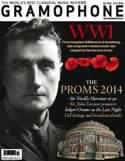Texte paru dans: / Appeared in:
*

GRAMOPHONE (07/2014)
Pour s'abonner /
Subscription information
Linn
CKD414

Code-barres / Barcode : 0691062041423
Reviewer:
David Vickers
This double set completes the Avison Ensemble’s survey of Corelli’s published opuses. Both of these Roman publications contain 12 trio sonatas apiece, and the majority of them adhere to the structure of the so-called sonata da chiesa (ie slow-fastslow-fast), hence the Avison Ensemble’s title of ‘Church Sonatas’ – although the original editions do not actually call any of them sonata da chiesa and the formula does not necessarily mean Corelli envisaged them for ecclesiastical surroundings.
Corelli’s dedication of Op 1 (1681) to his patron, the exiled Queen Christina of Sweden, calls these sonatas ‘the first fruits of my study’. They are invested with an exquisite sense of harmonic balance by violinists Pavlo Beznosiuk and Caroline Balding, supported with tasteful delicacy by Richard Tunnicliffe (cello), Paula Chateauneuf (archlute) and Roger Hamilton (organ). The Avison Ensemble excel at the madrigalian counterpoint, perfect proportions and lyrical taste evident in the slow introductions to No 3 and No 12, whereas the Vivace first movement of the fourth sonata is elegantly alert. Tunnicliffe’s shading of the basso continuo line has the perfect amount of chiaroscuro in the penultimate Allegro of No 5, whereas
Chateauneuf’s dexterously articulated archlute takes centre stage for the rolling bass-line of the Allegro in No 8. Dance forms such as the sarabande-style Adagio of No 9 are judged beautifully, although Beznosiuk and Balding’s conversational bowing also captures the muscular shock of chromatic falling figures in the second movement of No 11.
Op 3 (1689) was dedicated to Duke Francesco II d’Este of Modena. The interplay between the five players is marvellously intuitive, such as the lean Presto that concludes No 4. On rare occasions Hamilton switches to a harpsichord for the sake of textural variety, such as the crispness it gives to the allegros in No 2 – although the highlight, as so often in Op 3, is the slow third movement (likewise, the largos of No 3 and No 8 are sublime). Any hint that these conscientious musicians might have merely motored through all 24 sonatas formulaically is contradicted by this classy conclusion to their distinguished Corellian project.
Cliquez l'un ou l'autre
bouton pour découvrir bien d'autres critiques de CD
Click either button for many other reviews


